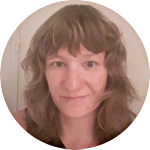Lead Isotopes in Archaeology: An Interactive Textbook
This interactive textbook provides learning content for all aspects related to the use of lead isotopes in archaeological research, particularly the reconstruction of the raw material provenance. It combines aspects of geochemistry, archaeology and data science into a holistic approach to this topic. It is an open educational resources, meaning that its content is free and the community is invited to participate in its creation.
Welcome

This interactive textbook is part of GlobaLID, the Global Lead Isotope Database. GlobaLID aims to modernise the handling of lead isotope data in archaeological research by providing an modern infrastructure for handling, storing and accessing these data. While working on this infrastructure, it became quickly obvious that beside the infrastructural aspects, a large demand on training in the lead isotope method exists, too. As a result, the idea of this interactive textbook was born.
This textbook aims to provide a holistic approach on how lead isotope data are obtained, used and interpret in archaeological research by combining aspects from geoscience, archaeology, and data science. The target group are all persons with a general background in science and basic knowledge in geosciences and preferably archaeology.
The content of this book mixes text with a wide range of media, such as videos, interactive content, serious games and small embedded application. The guiding principles for work on this book are to make its content available and as accessible as possible without requiring specialised infrastructure, including a collection of print templates and other resources that you will hopefully find useful for, e.g., everyday work in the lab.
This textbook is still work in progress with additional chapters being added over time. We are welcoming any kind of contribution and feedback from our readers and the experts in the field. The current outline of the book is already presented to show what is yet to come and where we would be particularly happy about contributions by the community. If you want to contribute, please contact the editor or fork the associated Github repository and create a push request with your materials.
The team
Editor

Thomas Rose (Goethe-Universität Frankfurt)
Thomas is a coordinator in the NDFI4Earth at Goethe University Frankfurt and visiting scientist of the Deutsches Bergbau-Museum Bochum. He gained expertise in ancient copper metallurgy with focus on the Chalcolithic Southern Levant and various metal isotope systems. In addition, he is member of the GlobaLID Core Team and developer of the R package ChronochRt. More info at https://copper-smelting.com.
Acknowledgements
This work has been partially funded by the German Research Foundation (DFG) through the project NFDI4Earth (NFDI4Earth Educational Pilot, DFG project no. 460036893, https://www.nfdi4earth.de/) within the German National Research Data Infrastructure (NFDI, https://www.nfdi.de/).


